Get in Touch
General
(508) 921-4600
Email Sales
Email Support
UEI Europe Office
+49 40 63698136
Email EU Sales
Visit this page for local offices and distributors.
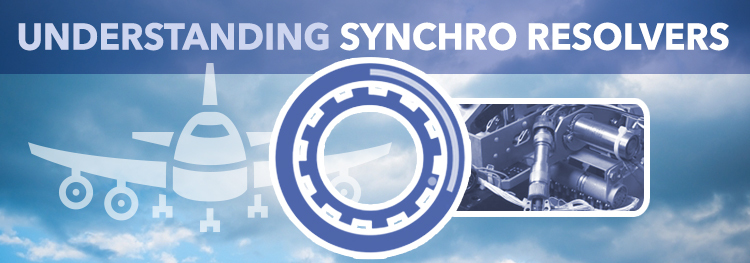
Synchro/Resolver Tutorial Guide
QUICK LINKS | ||
 |  |  |
 |  |  |
What is a Synchro/Resolver?
Synchro: Transducer that uses a transformer whose primary-to-secondary coupling may be altered by changing the relative orientation of the two windings. Synchros are often used for measuring the angle of a rotating machine or in case of selsyn (self-synchronous) configuration, used for controlling position of a device. In its general physical construction, it is much like an electric motor. The primary winding of the transformer, fixed to the rotor, is excited by an alternating current causes voltages to appear between the Y-connected secondary windings fixed spatially at 120 degrees to each other on the stator. The voltages are measured and used to determine the angle of the rotor relative to the stator.
Resolver: Type of rotary electrical transformer used for measuring degrees of rotation. The name resolver comes from resolving an angular input in to its x and y components. It is considered an analog device, and has digital counterparts such as the digital resolver, rotary (pulse) encoder.
What to know about common misconceptions of synchro signals? Click to read the blog post below.
Overview
UEI manufactures a wide variety of analog and digital IO boards, including ones for Synchro/Resolvers, LVDTs, and RVDTs. Each board can supply the excitation voltage and measure the output wave forms of the transducer. They can also be used in simulation applications to simulate the transducer.
Like all UEI IO Boards, the Synchro/Resolver IO Board offers operation in harsh environments and has been tested to last within:
- 5G Vibration
- 50G Shock
- -40 to 85 Degrees Celsius
- Altitudes up to 70,000 Feet
Synchro/Resolvers allow you to monitor and control:
- Position of a flap on an aircraft wing
- Control stick of a helicopter
- Turret position of a military tank
- Throttle position of an aircraft
- Orientation of an antenna platform
Why You Need UEI's Synchro/Resolver & VDT IO
Engineers use UEI hardware to test, measure and control synchro, resolver, and VDTs for their applications. Our versatile IO boards can support Star or Delta configurations as well as a wide range of voltages and frequencies.
Original Uses
- First used in the control system of the Panama Canal in the early 1900s to transmit lock gate/valve stem positions, and water levels
- Fire-control system designs developed during World War II to transmit angular information from guns and sights to an analog fire control computer, and to transmit the desired gun position back to the gun location
- Smaller synchros were used to remotely drive indicator gauges and as rotary position sensors for aircraft control surfaces
- Large synchros were used on naval warships, such as destroyers, to operate the steering gear from the wheel on the bridge
Synchro System Types
There are two types of synchro systems: torque systems and control systems.
Torque system: a system in which the transmitted signal does the usable work. In such a system, accuracy on the order of one degree is attainable.
Control system: a synchro will provide a voltage for conversion to torque through an amplifier and a servomotor. Control type synchros are used in applications that require large torques or high accuracy such as follow-up links and error detectors in servo, automatic control systems (such as an autopilot system). In simpler terms, a control synchro system is a system in which the transmitted signal controls a source of power which does the usable work.
What programs can you run with this?
We have designed our data acquisition hardware to be software flexible. That means you can use a variety of programming languages and programs with our UEI I/O boards. One particularly popular program used is National Instrument’s ‘LabVIEW’. We supply these samples so you can create a standard acquisition application in the shortest time possible. UEI supports a variety of acquisition modes (Buffered IO, Simple IO, Messaging IO, DMap IO) which can be accessed through the simple pull downs.
Our extensive collection of prebuilt examples and VIs make it easy to get up and running quickly. Our LabVIEW interface has the same API as our C API, which means that there are no islands of programmers at your facility. Your LabVIEW and C programming teams can exchange knowledge and experience seamlessly.
How to Activate Your Program
- First, start by plugging a board into a chassis.
- Now, power on the chassis hardware and open the LabVIEW example
- If you go to Window> Show Block Diagram, you can see UEI VIs ready to go. In fact, there is a UEI tree which lists all the UEI VIs. Similarly, depending on the type of data you are wishing to acquire, you can use the session polymorphic VI pull down to configure different inputs or outputs
- Run the LabVIEW example to begin communicating to the chassis, reading Synchro/Resolver position.
As you can see, there are simple drop downs which will allow you to configure your system to whatever specifications you would like; whether that be changing the data value you are recording or changing the method of acquiring such data.
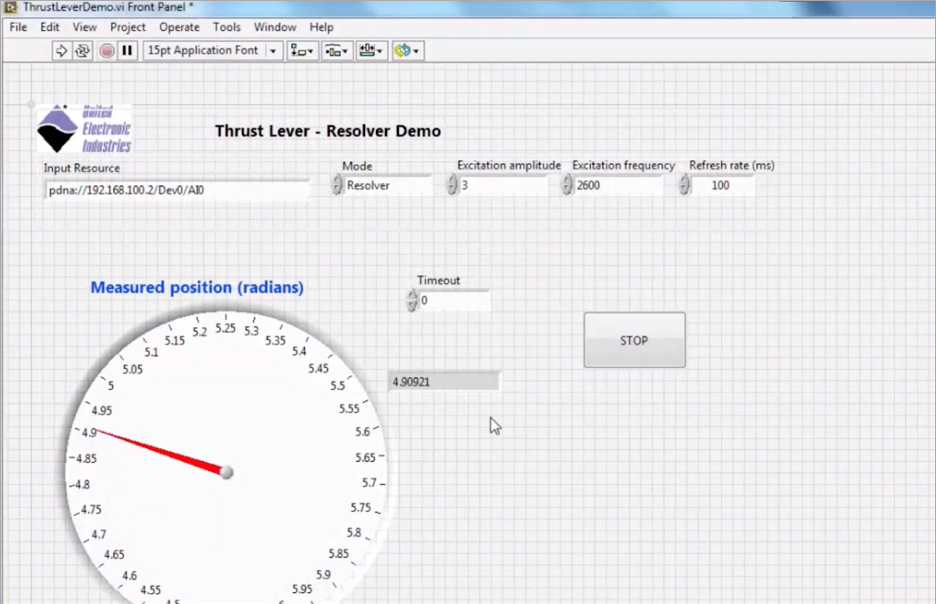
Here is a demo of a throttle system in which the position of the throttle is being measured by the resolver and relayed into a LabVIEW application.
What makes UEI's Synchro/Resolver I/O so unique?
- Isolated and independent channels: one can be input while other is simulation.
- Support for monitoring external excitation, or board generating internal excitation.
- Programmable excitation, up to 28Vrms and 10kHz.
- Support for 3-wire synchros and 4-wire resolver. Additional support for Z-grounded synchros. With independent channels, one board can measure/simulate both a resolver and a synchro.
- Ready for rugged application environments, -40º C to 85º C operating range.
The Physical I/O Board
Board | Input Range | Simulation Range | ||
Voltage | Frequency | Voltage | Frequency | |
2-28Vrms | 50Hz-4kHz | up to 28Vrms | 50Hz to 4kHz | |
5-115Vrms | 50Hz-4kHz | up to 28Vrms | 50Hz to 4kHz | |
2-28Vrms | 50Hz-10kHz | up to 19.8Vrms | 50Hz-10kHz | |
Using a different device to measure position or velocity? Check out some of these boards:
- Quadrate encoder – QUAD-604
- SSI encoder – SL-514
- LVDT/RVDT – AI-256
- Hall-effect/Variable reluctance – VR-608
UEI offers a wide variety of Synchro/Resolver I/O boards, available for cube, rack, or military chassis, and are well suited for test, measurement, control, and simulation applications.. All UEI I/O boards offer operations in harsh environments and has been tested to 5g vibration, 50g shock, -40 to +85°C temperature, and altitudes up to 70,000 feet in cube based systems. Each board is capable of supplying the excitation voltage and measuring the output waveforms of the transducer. They can also be used in simulation applications to simulate the output of the transducer.
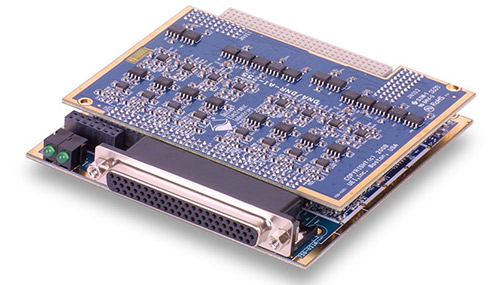 | The DNx-AI-255 Synchro/Resolver I/O board features 2 input / output channels, 16-bit resolution, 3-wire (Synchro) and 4-wire (Resolver) inputs, reference output per channel, 2 to 28 Vrms programmable reference, 50 Hz to 4000 Hz, 28 Vrms output at 1.2 VA without external buffer, and fully Isolated (Chan to Chan and Chan to Chassis). Click here to learn more. |
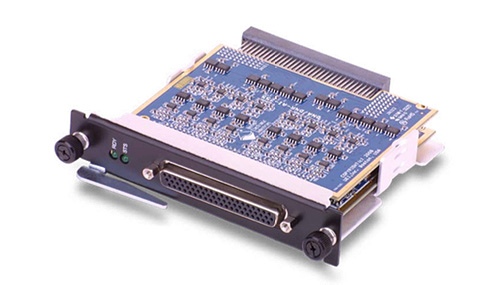 | The DNx-AI-255-815 Synchro/Resolver I/O board features 2 input / output channels, 16-bit resolution, 3-wire (Synchro) and 4-wire (Resolver) inputs, reference output per channel, 5-115 Vrms inputs, 50 Hz to 4000 Hz, 2-28 Vrms output/reference at 1.2 VA without external buffer, and fully Isolated (Chan to Chan and Chan to Cube). Click here to learn more. |
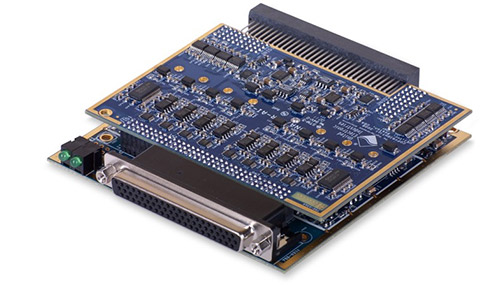 | The DNx-AI-256 High Output Drive Synchro/Resolver/LVDT/RVDT board features 2 input / output channels, 16-bit resolution, 3-wire (Synchro) and 4-wire (Resolver) inputs, 4, 5 and 6-wire LVDT/RVDT support, reference output per channel, 5 to 18 Vrms programmable reference, 50 Hz to 10 kHz, and up to 2.4 VA without external buffer. Click here to learn more. |
Synchro/Resolver Video Tutorials
LabVIEW & UEI: Interfacing with a Synchro/Resolver
We show you how to quickly configure LabVIEW to receive data from a United Electronic Industries Synchro/Resolver I/O module. In this example, the module is measuring the position of an aircraft thruster and passing along the data to the LabVIEW software running on a standard PC laptop.
Thrust Simulation with UEI's 255 Synchro/Resolver Interface Board
UEI engineers demonstrate how they can use a UEI Synchro/Resolver I/O board to gather data from an aircraft thrust lever and feed it into a National Instruments LabVIEW application. This simulation can monitor the thrust position as well as capture and export the data.
UEI Engineers Demonstrate Driving a Synchro-Based Flap Indicator
Dana explains the troubleshooting process UEI's engineering team used to evaluate an erratic flap indicator using an AI-256.
Related Applications
UEI has a wide variety of solutions for your defense and aerospace applications. Please click on the below to learn more.
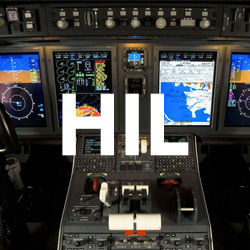 | 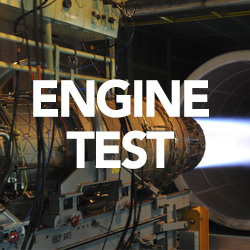 | 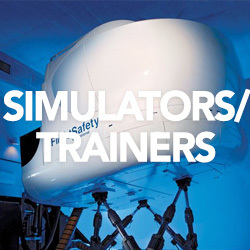 | 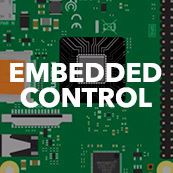 |
